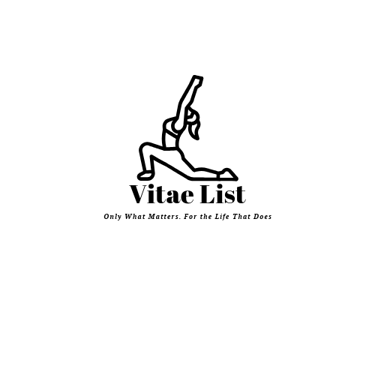How Strength Training Supports Better Sleep and Recovery Cycles
Learn how strength training improves sleep quality and recovery cycles. This guide explores the science behind exercise, hormones, and rest, showing how lifting weights leads to deeper sleep, better recovery, and overall wellness.
WELLNESS
Vitae List
9/27/20253 min read


How Strength Training Supports Better Sleep and Recovery Cycles
Disclosure: Vitae List is a participant in the Amazon Services LLC Associates Program, an affiliate advertising program designed to provide a means for sites to earn fees by linking to Amazon.com and affiliated sites. As an Amazon Associate, we earn from qualifying purchases at no extra cost to you.
Introduction: The Overlooked Connection Between Training and Sleep
Most lifters focus on sets, reps, and workout splits—but the real gains often happen outside the gym. Quality sleep and recovery cycles are essential for building muscle, balancing hormones, and preventing burnout. Surprisingly, strength training itself can be one of the most effective ways to improve sleep quality.
By engaging in consistent resistance training, you’re not just building stronger muscles—you’re setting the stage for deeper sleep and more effective recovery.
The Science of Sleep and Recovery
Sleep is when the body repairs and grows. During deep sleep, the body releases growth hormone, restores energy levels, and repairs muscle tissue. Without quality rest, progress stalls and recovery lags.
Recovery cycles—both physical and mental—are regulated by circadian rhythms and the balance of hormones like melatonin, cortisol, and testosterone. Disruptions in sleep can throw off these cycles, leading to fatigue, poor performance, and even increased injury risk.
Strength training helps realign these cycles by creating physical demand, reducing stress, and supporting hormonal balance.
How Strength Training Improves Sleep Quality
1. Reduces Stress and Anxiety
Strength training lowers cortisol (the stress hormone) and boosts endorphins. This creates a calmer state of mind that promotes better sleep onset.
2. Regulates Circadian Rhythm
Exercising at consistent times helps reinforce the body’s natural sleep-wake cycle. Morning or afternoon lifting sessions signal the brain to be more alert during the day and rest-ready at night.
3. Increases Deep Sleep
Studies suggest resistance training may increase time spent in slow-wave (deep) sleep, the most restorative phase where muscle repair and growth hormone release peak.
4. Improves Sleep Efficiency
Strength training helps people fall asleep faster and stay asleep longer, minimizing restless nights.
The Recovery Benefits of Strength Training
1. Enhances Muscle Repair
When you challenge muscles with resistance, you trigger micro-tears that require rest to rebuild. Strength training encourages the body to adapt, and consistent training cycles paired with recovery improve long-term growth.
2. Boosts Hormonal Health
Lifting weights increases testosterone and growth hormone—both critical for tissue repair and recovery. These hormones are most active during quality sleep, making the two processes inseparable.
3. Promotes Active Recovery
Strength training increases circulation, which delivers oxygen and nutrients to muscles even on rest days. This speeds recovery and reduces soreness.
4. Builds Resilience Against Fatigue
Over time, strength training improves energy efficiency, making your body more resilient to physical and mental fatigue.
Best Practices: Pairing Training with Sleep for Maximum Recovery
Avoid late-night heavy lifting. Training too close to bedtime may spike adrenaline and delay sleep. Aim to finish workouts at least 2–3 hours before bed.
Prioritize post-workout nutrition. A mix of protein and complex carbs aids muscle repair and supports nighttime recovery.
Stay hydrated. Dehydration increases nighttime cramps and restless sleep.
Create a recovery routine. Stretching, foam rolling, or magnesium supplementation can ease muscle tension and prepare the body for rest.
Track sleep quality. Wearable devices can provide insights into how training affects your recovery cycles.
Supplements and Tools for Better Sleep and Recovery
While training itself promotes sleep, pairing it with smart recovery tools can amplify results:
Magnesium glycinate → Supports muscle relaxation and deeper sleep. https://amzn.to/46E8btj
Protein powders → Ensure muscles have amino acids for repair before bedtime. https://amzn.to/46rTA5q
Foam rollers and massage guns → Relieve tension and aid circulation.
Theragun mini - https://amzn.to/48xfHIU
TriggerPoint CORE roller - https://amzn.to/42ggwSt
Sleep trackers → Monitor cycles and optimize bedtime habits.
My Fitbit Versa 4 tracks my sleep cycles and even has a handy alarm that wakes you in the right sleep cycle! https://amzn.to/46HcTXh
(These tools are widely available on Amazon, making it easy to add them into your recovery plan.)
Practical Weekly Routine Example
Strength Train: 3–5 times per week, ideally mornings or afternoons.
Active Recovery Days: Light walking, yoga, or mobility work.
Bedtime Routine: Screens off 1 hour before bed, cool dark room, and consistent sleep schedule.
Nutrition: Balanced meals with enough protein (1.6–2.0g/kg body weight) to fuel growth.
By blending smart training with intentional recovery habits, you’ll maximize progress without sacrificing energy.
Final Thoughts
Strength training and sleep are two sides of the same coin. One pushes your body to grow stronger; the other provides the environment to make that growth possible. By prioritizing both, you’ll recover faster, lift heavier, and feel more energized—not just in the gym, but in every part of life.
Week after week, remember this: lifting builds the demand, but sleep delivers the results.
